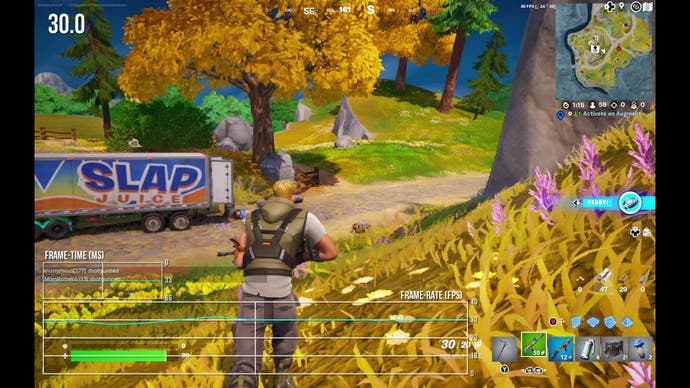DF Direct Weekly: should the next Steam Deck deliver more performance?
Plus: Marvel's Spider-Man 2 dated and the RDNA 3 review aftermath discussed.
Welcome to the latest DF Direct Weekly - and while the year is drawing to a close, there still seems to be enough gaming and technology news to allow us to deliver a packed show. We kick off with discussion on Marvel's Spider-Man 2 - now dated for 'Fall' 2023 - while we also share our thoughts on the extent to which Death Stranding's content would work for its transition to cinema.
The story that caught my eye this week was Sean Hollister's interview with Valve on The Verge, where the company revealed that any successor to the existing Steam Deck would concentrate on quality of life functions like battery life and an improved screen, as opposed to delivering much in the way of extra performance. Improved performance is always a good thing but in this case, I think the decision is a sound one: it sets a baseline for all Steam Deck users, it keeps the current hardware in the game, and it addresses the key issues have with the existing model. Put simply, the screen redefines 'mediocre' while battery life can be poor on the latest games, or even by ramping up settings on older titles.
However, as you'll see in the show, I had concerns over the extent to which Steam Deck can survive the cross-gen transition. It's unfair to judge the hardware based on sub-optimal PC ports like The Callisto Protocol - where the Deck struggles - but I was more concerned about whether the hardware has the performance to handle Unreal Engine 5 features like Lumen and Nanite. I actually followed this up after the recording by installing Windows on my Deck and running Fortnite. At 1280x800 resolution with TSR medium on quality mode, I can indeed use the high-end features and performance is in the 30-36fps region (unfortunately, the 30fps cap has frame-pacing issues and there is some shader compilation stutter in traversal). I was genuinely surprised by this bearing in mind how poorly UE5.0 demos ran on the Valve machine.
- 00:00:00 Introduction
- 00:01:00 News 01: Marvel's Spider-Man 2 to launch in fall 2023
- 00:08:51 News 02: Death Stranding film in the works
- 00:14:45 News 03: Valve discusses Steam Deck successor
- 00:26:45 News 04: RX 7900 XT/XTX review aftermath
- 00:51:34 News 05: Returnal PC requirements announced
- 00:57:39 News 06: High on Life launches with major issues, quickly patched
- 01:06:54 DF Supporter Q1: Which games would you like to get RTX Remix enhancements?
- 01:10:51 DF Supporter Q2: Why doesn't DLSS significantly lower VRAM use?
- 01:12:22 DF Supporter Q3: Would you ever release the DF performance analysis tools to the public?
- 01:17:05 DF Supporter Q4: Would you prefer to play a game with great ray tracing but with shader compilation stutter, or a game without ray tracing with no stutters?
Another interesting point to emerge from the Valve interview is that the designers remain happy with the custom Van Gogh AMD part they're using in the Deck, even though more powerful APUs are emerging - with several handhelds arriving using the Ryzen 6800U, which packs in twice the amount of physical CPU cores along with more RDNA 2 compute units. Valve believes that the 6800U's specs advantage makes it less suitable from an efficiency perspective for a handheld. This is something I'll be testing soon as the AyaNeo 2 just arrived at the Digital Foundry lair. I can't wait to give that a go - and a 15W power limit face-off against Steam Deck will be forthcoming.
This week, we also spend some time talking about the new AMD RDNA 3 GPUs, which I reviewed last week. On the face of it, Nvidia gave the Radeon team a prime target in the form of the excellent-but-too-expensive RTX 4080 - and it's clear that the RX 7900 XTX in particular can outperform it in terms of rasterisation. However, there's also a fair amount of disappointment on social media about the silicon failing to meet expectations - expectations set up in part by AMD itself, promising 1.5x to 1.7x performance improvements over the outgoing RX 6950 XT.

Per the review, I think the XTX is fine - but not exactly spectacular - for its price-point, while the XT sees AMD following in Nvidia's footsteps by asking users to pay more for less, relatively, upending decades' worth of precedent in the GPU market. What's also clear is that while the RX 6900 XT could mix it up with its Nvidia contemporary - the RTX 3090 - in rasterisation at least, AMD has been unable to repeat the trick as effectively with RDNA 3. Twitter is awash with theories on underbaked silicon and dodgy drivers, and while there will be some improvements, I believe we just need to accept that RDNA 3 is what it is. Whether it's multi-chiplet design is a hindrance to performance as some have speculated, remains unknown but RX 7800 XT and other lower-end cards will be based on single-chip designs, so we may gain further insight then.
We also discuss High on Life, which launched in a bit of a sorry state on Xbox Series consoles, with a profound camera stutter problem that made 60fps look more like a poorly frame-paced 30fps. The good news for gamers is that the developer fixed the issue - and has followed by addressing some of our other issues, including fixing the #StutterStruggle issues that made the PC version objectionable. That said, it did make our video coverage entirely redundant, so we ended up canning the whole project - mostly because we simply didn't have time to recapture all the required b-roll. The video is available to all backers of the DF Supporter Program, however!
And yes, as always, supporters have a good deal of input to the show - questions are posed every week, a selection of which end up in the final show, plus there's early access to backers, who get to see the new Direct on Saturday, a couple of days ahead of general release. Fancy joining us? I'd love it if you did, and here are some reasons why you might consider it!


